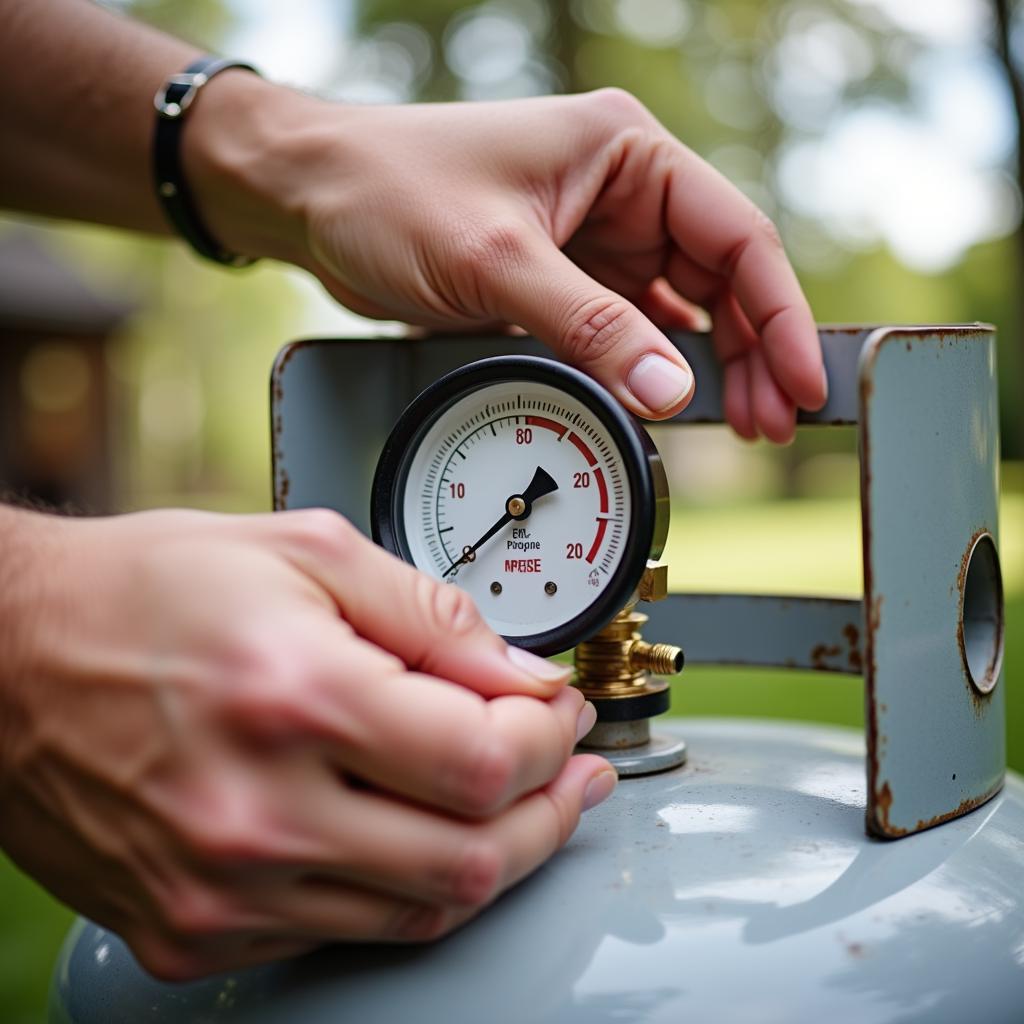Experiencing trouble getting your Dometic RV refrigerator to ignite? You’re not alone. This is a common issue faced by many RV owners. A malfunctioning ignition system can quickly derail your camping trip, leaving you with spoiled food and a lot of frustration. This guide will walk you through the common causes of “Probleme Allumage Frigo Gaz Camping Car Dometic” and provide troubleshooting tips to help you get your refrigerator up and running again.
Understanding Your Dometic RV Refrigerator Ignition System
Before we dive into troubleshooting, let’s quickly review how the ignition system in your Dometic RV refrigerator works. Most Dometic refrigerators use a system that relies on several components:
- Gas Supply: Propane or butane provides the fuel for the burner.
- Control Knob: This knob allows you to set the desired temperature and initiates the ignition sequence.
- Spark Electrode: This component generates a spark to ignite the gas.
- Flame Sensor: Also known as a thermocouple, this safety device shuts off the gas supply if it doesn’t detect a flame.
- Burner: The burner mixes gas and air for combustion, producing the heat necessary for the refrigerator’s cooling system.
A failure in any of these components can prevent your refrigerator from igniting.
Common Causes and Solutions for Dometic Refrigerator Ignition Problems
Let’s explore some of the most common culprits behind ignition problems and how to address them.
1. Propane Supply Issues
Problem: One of the simplest explanations for a refrigerator that won’t light is a lack of propane. Your tank might be empty, the valve might be closed, or there could be a blockage in the gas line.
Solution:
- Check the Propane Level: Start by checking your propane tank gauge. If it’s low or empty, you’ll need to refill it.
- Inspect the Propane Valve: Ensure the valve on your propane tank is fully open.
- Check for Kinks or Blockages: Visually inspect the propane line connecting your tank to the refrigerator for any kinks, bends, or obstructions that could be restricting gas flow.
 Checking the RV Propane Tank
Checking the RV Propane Tank
2. Faulty Spark Electrode or Ignition System
Problem: The spark electrode is responsible for creating the spark that ignites the gas. If the electrode is dirty, damaged, or improperly positioned, it may not spark correctly.
Solution:
- Locate the Electrode: Refer to your refrigerator’s manual to locate the spark electrode and burner assembly.
- Visual Inspection: Look for any visible signs of damage, such as cracks or corrosion on the electrode.
- Clean the Electrode: Use a fine-grit sandpaper or emery cloth to gently clean the tip of the electrode, removing any carbon buildup.
- Adjust Electrode Gap: A small gap should exist between the electrode tip and the burner. Consult your manual for the correct gap distance and make adjustments if necessary.
 Cleaning the Spark Electrode of an RV Refrigerator
Cleaning the Spark Electrode of an RV Refrigerator
3. Malfunctioning Flame Sensor
Problem: The flame sensor, or thermocouple, is a safety device that ensures the gas valve remains open only when a flame is present. If the flame sensor is faulty, it may not detect the flame, shutting off the gas supply prematurely.
Solution:
- Identify the Flame Sensor: Refer to your refrigerator manual to locate the flame sensor, typically positioned near the burner.
- Inspect for Soot or Debris: Check the flame sensor for any soot buildup or debris that could be interfering with its operation.
- Clean the Sensor: Gently clean the sensor using fine-grit sandpaper or emery cloth.
- Test the Sensor: If cleaning doesn’t resolve the issue, you may need to test the flame sensor using a multimeter to ensure it’s functioning correctly. Replacement is often necessary if the sensor is faulty.
 Inspecting the Flame Sensor on an RV Refrigerator
Inspecting the Flame Sensor on an RV Refrigerator
4. Clogged Burner Tube
Problem: Over time, the burner tube can become clogged with dust, spiderwebs, or debris, restricting the gas flow and preventing proper ignition.
Solution:
- Access the Burner Tube: Consult your manual for instructions on accessing the burner tube. This typically involves removing a protective cover or panel.
- Inspect and Clean: Carefully inspect the burner tube for any obstructions. Use a soft brush, compressed air, or a pipe cleaner to gently remove any debris.
- Reassemble and Test: After cleaning, reassemble the burner assembly and attempt to ignite the refrigerator.
“Regular maintenance is crucial for preventing RV refrigerator problems,” advises John Miller, a certified RV technician with over 20 years of experience. “Cleaning the burner tube and spark electrode annually can save you from unexpected breakdowns during your trips.”
5. Control Board or Gas Valve Failure
Problem: In some cases, a faulty control board or gas valve can be the root of your ignition problems. These components are more complex and usually require professional diagnosis and repair.
Solution:
- Seek Professional Help: If you suspect a problem with the control board or gas valve, it’s best to contact a qualified RV technician or Dometic service center.
Conclusion
Troubleshooting “probleme allumage frigo gaz camping car dometic” can sometimes be straightforward, but it often requires a systematic approach and a good understanding of your refrigerator’s ignition system. Remember to always prioritize safety by working in a well-ventilated area and turning off the gas supply before attempting any repairs.
If you’re uncomfortable with any of these troubleshooting steps or if the problem persists, don’t hesitate to seek help from a qualified RV technician. They have the expertise and tools to diagnose and fix complex issues, ensuring your Dometic RV refrigerator keeps your food cold and your camping trips enjoyable.
Need expert assistance with your RV refrigerator repair? Contact AutoTipPro today at +1 (641) 206-8880 or visit our office located at 500 N St Mary’s St, San Antonio, TX 78205, United States. We’re here to help you get back on the road!






Leave a Reply